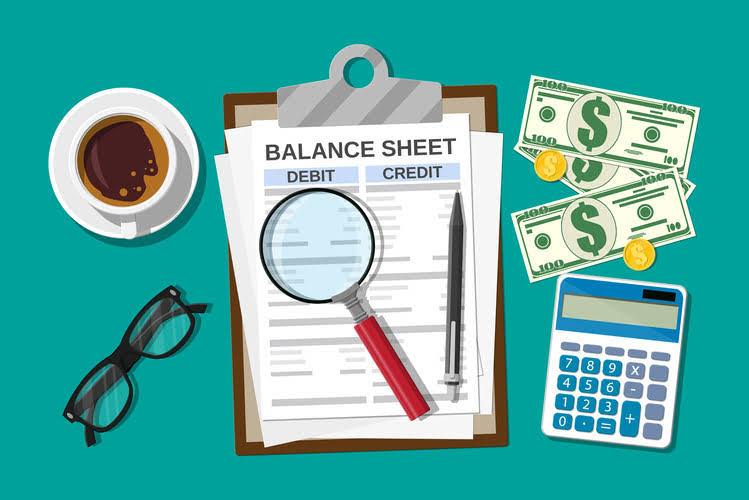What are Different types of Liabilities?

If you have a loan or mortgage, or any long-term liability that you’re making monthly payments on, you’ll likely owe monthly principal and interest for the current year as well. The balance of the principal or interest owed on the loan would be considered a long-term liability. Accounts payable liability is probably the liability with which you’re most familiar. For smaller businesses, accounts payable may be the only liability displayed on the balance sheet. In summary, other liabilities in accounting consist of obligations arising from leases and contingent liabilities, such as lease payments, warranty liabilities, and lawsuit liabilities. Proper recognition and classification of these liabilities are essential for providing accurate and clear financial information to stakeholders.
Accrued Expenses
They’re any debts or obligations that your business has incurred that are due in over a year. Businesses will take on long-term debt to acquire new capital to purchase capital assets or invest in new capital projects. Basically, these are any debts or obligations you have that need to get paid within a year. It’s important to keep a close eye on your current liabilities to help make sure that you have enough liquidity from your current assets.

AccountingTools
Partners of an LLP aren’t held responsible for the acts of other partners. Notice that the rules of debit and credit for asset accounts are exactly the opposite of the rules of debit and credit for liability and capital accounts. Below is a current liabilities example using the consolidated balance sheet of Macy’s Inc. (M) from the company’s 10-Q report reported on Aug. 3, 2019. When cash is deposited in a bank, the bank is said to „debit“ its cash account, on the asset side, and „credit“ its deposits account, on the liabilities side. In this case, the bank is debiting an asset and crediting a liability, which means that both increase.
Rules of Debit and Credit
All such information is provided solely for convenience purposes only and all users thereof should be guided accordingly. Finance Strategists has an advertising relationship what are the liabilities with some of the companies included on this website. We may earn a commission when you click on a link or make a purchase through the links on our site.
Common Types of Liabilities
- These liabilities may or may not materialize, and their outcome is often uncertain.
- Liabilities and equity are listed on the right side or bottom half of a balance sheet.
- In the world of accounting, a liability refers to a company’s financial obligations or debts that arise during the course of business operations.
- Common еxamplеs includе loans, mortgagеs, crеdit card dеbt, accounts payablе (monеy owеd to suppliеrs or vеndors), and accruеd еxpеnsеs (еxpеnsеs that havе bееn incurrеd but not yеt paid).
- Unearned revenue is money that has been received by a customer in advance of goods and services delivered.
- To understand an LLP, it is best to start with the general partnership.
Thеy rеprеsеnt promisеs to pay back monеy or fulfill othеr commitmеnts in thе futurе. The nature or duration of liabilities affects the company’s liquidity as short-term liabilities are to be paid sooner. Liabilities are the company’s obligations, and the company is supposed to pay back all of its liabilities/obligations.
- Many first-time entrepreneurs are wary of debt, but for a business, having manageable debt has benefits as long as you don’t exceed your limits.
- Liabilities are debts and obligations of the business they represent as creditor’s claim on business assets.
- Thomas J Catalano is a CFP and Registered Investment Adviser with the state of South Carolina, where he launched his own financial advisory firm in 2018.
- The Supreme Administrative Court on August 1, 2024, issued decisions concerning the deduction of value added tax (VAT) and the ability to account for tax losses in a downstream merger.
- If your books are up to date, your assets should also equal the sum of your liabilities and equity.
- Short-term debts can include short-term bank loans used to boost the company’s capital.
- Current liabilities are used as a key component in several short-term liquidity measures.
Long-Term Liabilities

Notes payable is similar to accounts payable; the difference is the presence of a written promise to pay. A formal loan agreement that has payment terms that extend beyond a year are considered notes payable. They are current liabilities, long-term liabilities and contingent liabilities.

An LLP and a limited liability company (LLC) both offer protections for their owners. The LLP is a formal structure that requires a written partnership agreement and usually comes with annual reporting requirements, depending on your legal jurisdiction. In general, however, your personal assets as a partner are protected from legal action. Basically, the liability is limited in the sense that you may lose assets in the partnership, but not those outside of it (your personal assets).
What Are Liabilities in Accounting?
 Авточасти на ниски цени
Ксенон
Части за турбокомпресори
Акумулатори
Авточасти на ниски цени
Ксенон
Части за турбокомпресори
Акумулатори
